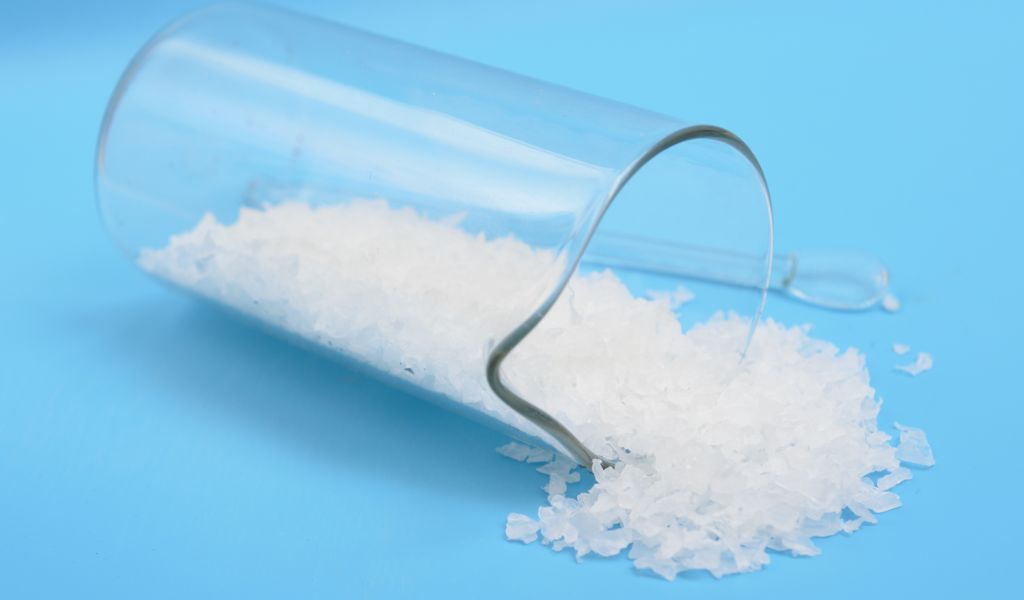Is Polyvinyl Alcohol The Future Of Sustainable Packaging?
14 October 2025
5 Mins Read

The world is drowning in plastic. From the deepest ocean trenches to the highest mountain peaks, this issue has started a massive global crisis. As a result, people have already started looking for alternatives.
For years, paper, compostables, and bioplastics have been the talk of the town. But there is a strong contender out there who is about to step into the spotlight: polyvinyl alcohol (PVOH or PVA).
This polymer has its own unique qualities, making it a perfect niche player. This polymer is synthetic and water-soluble!
Despite being a perfect alternative, industry experts and environmentalists are wondering if PVA is an unsung hero that can help you with the sustainable packaging future!
The answer lies not just in its chemical synthesis but in its potential to bridge the gap between performance and complete environmental degradation.
Polyvinyl Alcohol Packaging: Understanding The Chemistry
To appreciate PVA’s potential, one must first understand its fundamental structure. Unlike common petrochemical plastics such as
- Polyethylene (PE)
- Polypropylene (PP)
These are derived from fossil fuels and possess carbon-carbon backbones that resist natural breakdown. PVA is synthesized through the hydrolysis of polyvinyl acetate.
The critical difference is the presence of hydroxyl groups (OH). These make the polymer highly hydrophilic or “water-loving,”
This feature gives PVA its defining characteristic: dissolution in water. This water solubility is the environmental trump card.
When exposed to water, PVA films dissolve, breaking down the physical structure of the packaging.
More importantly, the solution formed after dissolution can be efficiently and completely biodegraded by microorganisms that are available in wastewater treatment facilities.
This two-step process, which includes dissolution followed by biodegradation, is a strong combination that makes PVA different from almost all other plastic packaging.
Using PVA is a major move to lessen plastic pollution. However, its real green value will only be if the source, production, and supply chain are of the same level of responsibility.
Companies must work with a trusted supplier that’s fully aware of the environmental impact of PVOH to ensure that the entire lifecycle of PVOH-based packaging meets the highest ecological standards and is fully accounted for.
Dissolution Vs. Degradation
The discourse surrounding plastics often blurs the lines between
- Biodegradability,
- Compostability, and
- Water-solubility.
But for polyvinyl alcohol packaging, the distinction is everything. A standard plastic like PLA (polylactic acid), while bio-based, often requires
- Industrial composting facilities with specific temperature and
- Humidity conditions to break down fully.
If it ends up in a landfill, it acts much like conventional plastic.
PVA, on the other hand, begins its end-of-life journey immediately upon contact with sufficient water.
This programmed obsolescence is its most sustainable attribute. The entire PVOH film
- Dissolves,
- Eliminating the macro-plastic litter problem and
- Preventing ghost nets. No microplastic fragments are floating in the sea.
After dissolving, the individual PVA chains are metabolized by bacteria into carbon dioxide and water.
These are provided they’re in an aerobic environment like a municipal wastewater system.
According to several international standards, it’s vital to note that while PVA is certified biodegradable, its sustainability depends on entering the water stream.
This makes it ideal for certain applications but unsuitable for others, thereby minimizing its overall environmental impact.
The Rise Of Practical Applications Of Polyvinyl Alcohol Packaging And Market Adoption
PVA is already an established component in several high-growth packaging sectors. The most recognizable and commercially successful application is in unit dose packaging, specifically dishwasher and laundry pods.
These articles rely wholly on the water-solubility aspect of PVA – the user just parts the wash with the pre-measured powder, and the wrapper disappears.
Besides offering convenience, this also ensures that the wrapping never becomes solid waste.
Outside detergents, the technology is fast diving into a variety of sectors where dissolution control is beneficial, as well as biomedical application areas with specialized products.
Examples of these include packaging for agrochemicals. This isolates the user from direct contact with the most dangerous parts.
This is similar to the packaging for personal care products, which provides simple, single-use, concentrated portions.
For instance, PVA is already found in materials such as wound dressings and contact lens materials.
The forthcoming ideas even cover food packaging for dry foods and protective films for shipping, which reflect the range of PVA.
As enterprises face increasing pressure from customers and laws to meet ambitious sustainability goals, they must adapt their strategies accordingly.
On top of that, the ease and verifiability of the end-of-life process for PVA unit doses make them an increasingly attractive option for global brands. The fact that it is used in pharmaceuticals also demonstrates its controlled release.
Technical Barriers And The Journey Towards Worldwide Implementation
However, PVA also has disadvantages that limit its ability to become a monopoly of the packaging industry despite its groundbreaking features. The main difficulty is its basic trait: being water-soluble.
Hence, it is wrong to think that PVA-wrapped mixtures, semi-solids, or any products requiring long-term moisture barrier properties, such as beverages and most fresh foods, can be safe.
In case the product is to be kept away from moisture, PVA won’t be the one to do it, even if it is dry and has good mechanical strength.
Furthermore, the manufacturing process for PVA is currently more energy-intensive and costly than for commodity plastics like polyethylene.
While this cost is offset by the value proposition in niche markets like detergent pods, the price point must decrease substantially to compete with conventional plastics in high-volume, low-margin applications.
Finally, a significant environmental caveat is the necessity of a properly functioning wastewater treatment plant.
While PVA biodegrades, it does so primarily under the aerobic conditions found in these facilities.
If the polyvinyl alcohol packaging is simply dissolved and dumped into a raw river or lake.
Now, if it enters an inadequate treatment system, the complete and timely biodegradation process can be compromised.
This underscores the need for systemic infrastructure improvements alongside material innovation.
The Verdict
Is PVA the future of sustainable packaging? The comprehensive answer is both yes and no.
PVA is demonstrably a game-changer for specific, high-impact applications, particularly in the realm of pre-portioned, dry-commodity unit dose packaging.
It elegantly solves the persistent issue of litter and microplastic contamination for these products by designing the packaging for complete dissolution and subsequent biodegradation.
For a world desperate to reduce its plastic footprint, PVA offers one of the most closed-loop and environmentally benign end-of-life solutions currently available. However, its inherent limitations, namely, its poor barrier properties against moisture, are significant.
This prevents it from being a true silver bullet capable of replacing all conventional plastic packaging.
Instead, PVA should be viewed as a crucial, specialized tool in a diverse toolbox of sustainable materials.
A single material won’t dominate the future of packaging sustainability, but by the strategic application of the right material for the right purpose.
And for single-use, water-exposed applications, PVA is undoubtedly poised to become a dominant force.
Read Also:



















Comments Are Closed For This Article